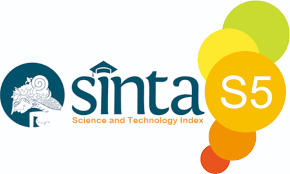Literature Study: A Blended Learning Model in Improving Creative Thinking Ability
DOI:
https://doi.org/10.22460/jler.v6i1.15874Keywords:
Learning model, Blended learning, CreativeAbstract
The selection of learning models is one of the important components that can affect the effectiveness of the learning process as well as the quality and learning outcomes. The blended learning model is known to be able to overcome various limitations associated with online learning and face-to-face teaching. Blended learning is also a combination of face-to-face teaching and online teaching, involving teachers, pictures, videos, digital assignments and face-to-face discussions. Learning with the blended learning model can be applied to every student and can be accessed anytime and anywhere via the internet. The Blended Learning Learning Model is considered very effective because the interaction of teachers and students is not limited by space and time and is able to overcome problems in the learning process. This study uses a qualitative approach with a literature study method. The data analysis technique used is content analysis. The results of this study conclude that the innovation of the Blended Learning learning model will raise students' independence and self-confidence because they try to find and explore learning resources not only from the teacher.
References
Bhakti, C. P., & Ghiffari, M. A. N. (2018). Blended Learning: Alternative Method of Core Curriculum to Improve 21th Century Student’s Creative Thinking Skills. International Colloquium: Opportunities and Challenges on Education Management in 21st Century, 1(1), 125–130
Divayana, D. G. H. (2017). Evaluasi pemanfaat e-learning menggunakan model CSE-UCLA. Cakrawala Pendidikan. Th. XXXVI(2), 280-289
Husamah. (2013). Pembelajaran Bauran (Blended Learning). Jakarta: Hasil Pustaka
Husamah. (2014). Pembelajaran Bauran (Blended Learning) Terampil Memadukan Keunggulan Pembelajaran Face-To-Face, E-learning Offline-Online, dan Mobile Learning. Jakarta: Prestasi Pustaka.
Hopkins, D., Craig, W., & Knight, O. (2015). Curiosity and powerful learning. Sydney: McREL Australia.
Jonathan, Sarwono. (2006). Metode Penelitian Kuantitatif dan Kualitatif. Yogyakarta: Graha Ilmu
Krippendoff, Klaus. (1993). Analisis Isi:Pengantar Teori dan Metodologi. Jakarta: Citra Niaga Rajawali Press.
Karwati, E. (2014). Pengaruh Pembelajaran Elektronik (e-Learning) Terhadap Mutu Belajar. Jurnal Penelitian Komunikasi Vol. 17 No. 1, 17(1), 41-54.
Nugrahaeni, A., Redhana, I. W., & Kartawan, I. M. A. (2017). Penerapan Model Pembelajaran Discovery Learning Untuk Meningkatkan Kemampuan Berpikir Kritis Dan Hasil Belajar Kimia. Jurnal Pendidikan Kimia Indonesia, 1(1), 23. https://doi.org/10.23887/jpk.v1i1.12808
Rahman, R. (2012). Hubungan Antara Self-Concept Terhadap Matematika Dengan Kemampuan Berpikir Kreatif Matematik Siswa. Infinity Journal, 1(1), 19. https://doi.org/10.22460/infinity.v1i1.4
Rahmanisa, D. (2014, Januari 4). Tujuan, Manfaat & Karakteristik E-learning. Diambil kembali dari Drahmanisa.blogspot.com: http://drahmanisa.blogspot.com/2014/01tujuan-manfaat-karakteristik-e- learning.html?m=1
Sari, Milya. (2016). Blended Learning, Model Pembelajaran Abad Ke-21 Di Perguruan
Susila Darma, I Putu. (2015). ICT: Suplemen Untuk Meningkatkan Kualitas Pembelajaran Dan Computer Literacy. Simposium Guru dan Tenaga
Sugiyono. (2012). Dasar-Dasar Evaluasi Pendidikan. Jakarta: PT Bumi Aksara.
Utari, W., Hikmawati, V. Y., & Gaffar, A. A. (2020). Blended Learning : Strategi Pembelajaran Alternatif Di Era New Normal. Seminar Nasional Pendidikan, FKIP UNMA 2020 “Transformasi Pendidikan Sebagai Upaya Mewujudkan Sustainable Development Goals (SDCs) Di Era Society 5.0,†262–269.
Yaniawati, P., Kariadinata, R., Sari, N. M., Pramiarsih, E. E., & Mariani, M. (2020). Integration of elearning for mathematics on resource-based learning: Increasing mathematical creative thinking and self-confidence. International Journal of Emerging Technologies in Learning, 15(6), 60–78. https://doi.org/10.3991/ijet.v15i06.11915






